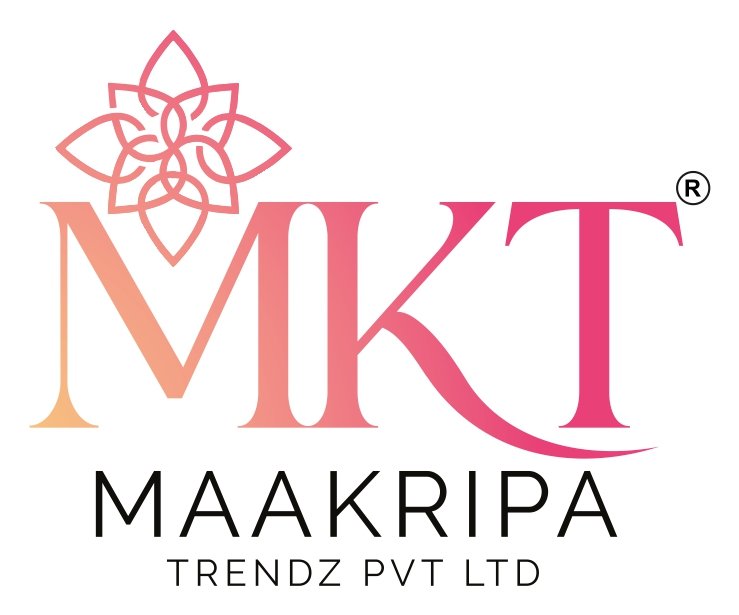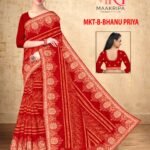Different Types of Sarees from Across India – A Cultural Guide

India is a land of vibrant cultures, and few garments express this diversity as beautifully as the saree. Every region has its own weaving tradition, fabric, and design aesthetic that tells a unique story. This guide explores some of the most celebrated sarees from across India, shedding light on the heritage they represent—and how our brand is helping preserve and reimagine these treasures for today’s generation.
1. Banarasi Saree – The Mughal Legacy of Varanasi (Uttar Pradesh)
Key Features: Heavy zari work, Mughal floral motifs, brocade designs
Occasions: Weddings, festivals, formal functions
One of India’s most luxurious sarees, Banarasi sarees are woven from fine silk and feature intricate gold and silver thread work. Originally made for royalty, they’re still a bride’s favorite.
🔸 Our contribution: We’ve modernized Banarasi sarees with pastel colors and lighter weaves, making them wearable beyond bridal wear.
2. Kanjivaram Saree – The Jewel of South India (Tamil Nadu)
Key Features: Bright colors, thick golden borders, temple designs
Occasions: Traditional ceremonies, religious events, weddings
Woven from pure mulberry silk, Kanjivaram sarees are known for their richness and durability. The motifs often depict stories from Hindu mythology.
🔸 Our take: Introducing half-and-half Kanjivarams with fusion blouse styles to attract younger wearers without losing the heritage appeal.
3. Chanderi Saree – Lightweight Elegance from Madhya Pradesh
Key Features: Sheer texture, delicate zari borders, peacock and floral motifs
Occasions: Office wear, poojas, casual festive wear
Chanderi sarees are woven from silk, cotton, or a blend. They’re breathable and elegant, perfect for day-long comfort with a classy look.
🔸 Our update: Digital floral prints and pastel shades in Chanderi to match contemporary styling preferences.
4. Paithani Saree – Maharashtra’s Pride
Key Features: Peacock and lotus motifs, vibrant hues, oblique square designs on pallu
Occasions: Religious functions, Maharashtrian weddings
Woven in pure silk with metallic thread work, Paithani sarees are prized heirlooms. The intricate hand-weaving process can take weeks to complete.
🔸 Our touch: We offer customizable Paithani patterns in lighter silk blends, making them more affordable and wearable.
5. Patola Saree – Double Ikat Masterpiece from Gujarat
Key Features: Symmetrical geometric patterns, vibrant colors, double ikat weaving
Occasions: High-end traditional events, festivals
Patola sarees are woven in such a way that the design remains the same on both sides of the fabric. They are rare and expensive due to the labor-intensive technique.
🔸 Our innovation: We collaborate with Patola artisans to create limited-edition sarees and support heritage handloom weaving communities.
6. Assam Silk Saree (Muga and Eri)
Key Features: Natural golden tint, soft sheen, nature-inspired motifs
Occasions: Cultural events, ethnic celebrations
Muga silk is exclusive to Assam and known for its durability and shine. It is a symbol of pride in Assamese culture.
🔸 Our role: We blend traditional Assamese motifs with modern blouse designs and color blocking for younger buyers.
7. Bandhani Saree – Tie-Dye Wonders from Rajasthan & Gujarat
Key Features: Dots, waves, and squares in vibrant tie-dye patterns
Occasions: Navratri, Mehendi, Sangeet functions
Made through a meticulous tie-dye process, Bandhani sarees burst with color and joy. Every pattern holds cultural meaning.
🔸 Our creation: We’ve introduced Bandhani prints on organza and georgette to give it a lighter, floatier feel for casual occasions.

 Bhanupriya
Bhanupriya